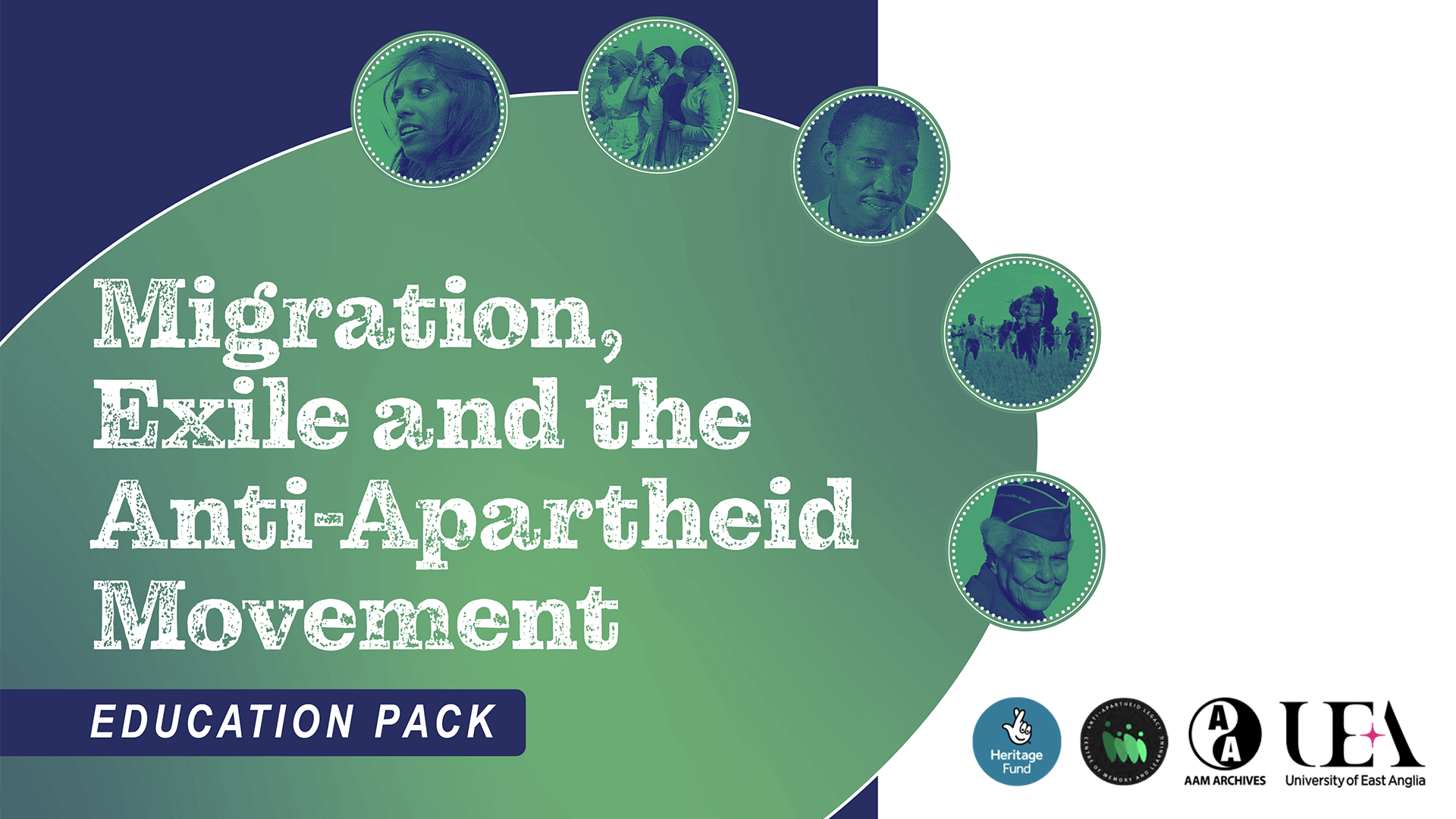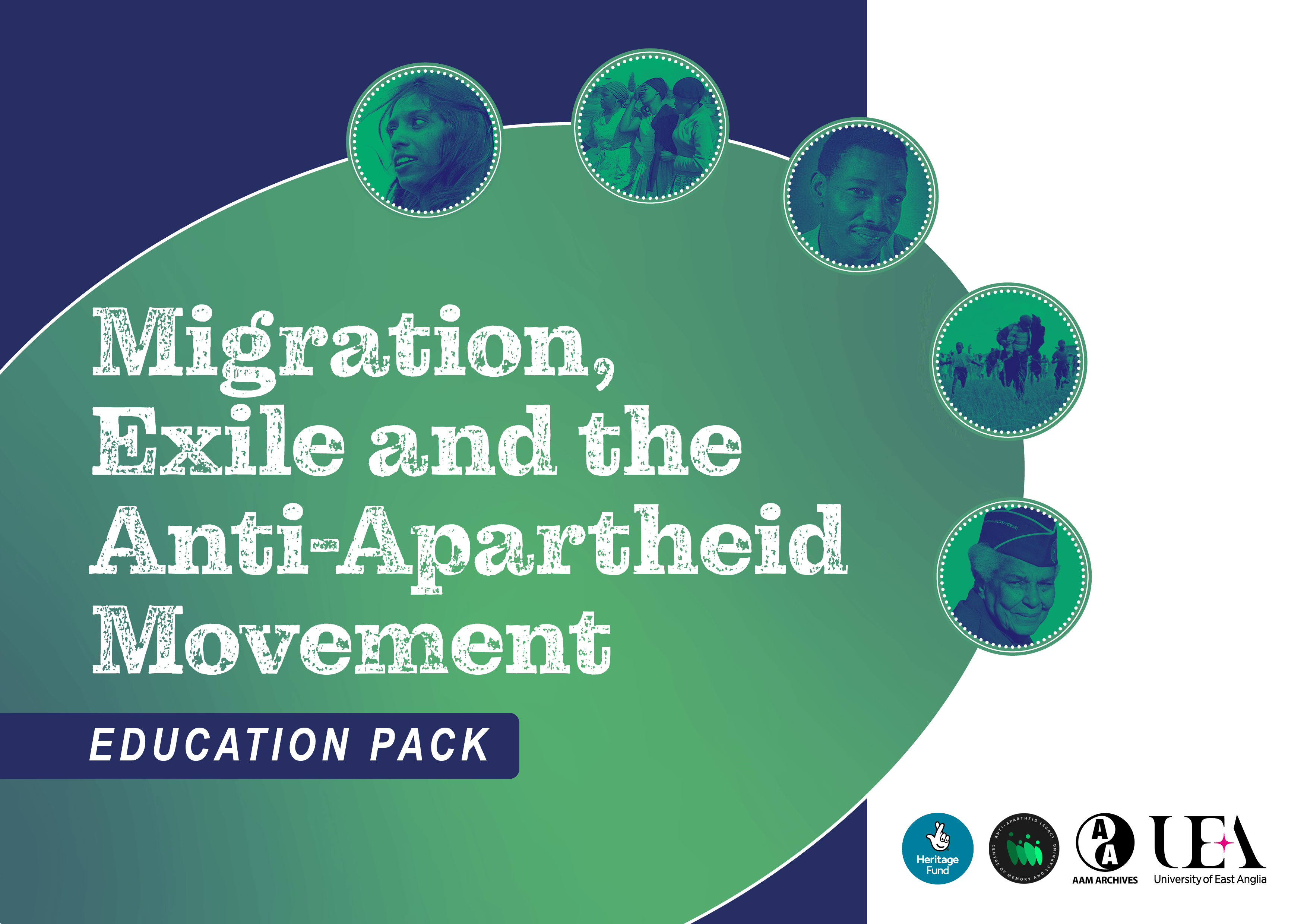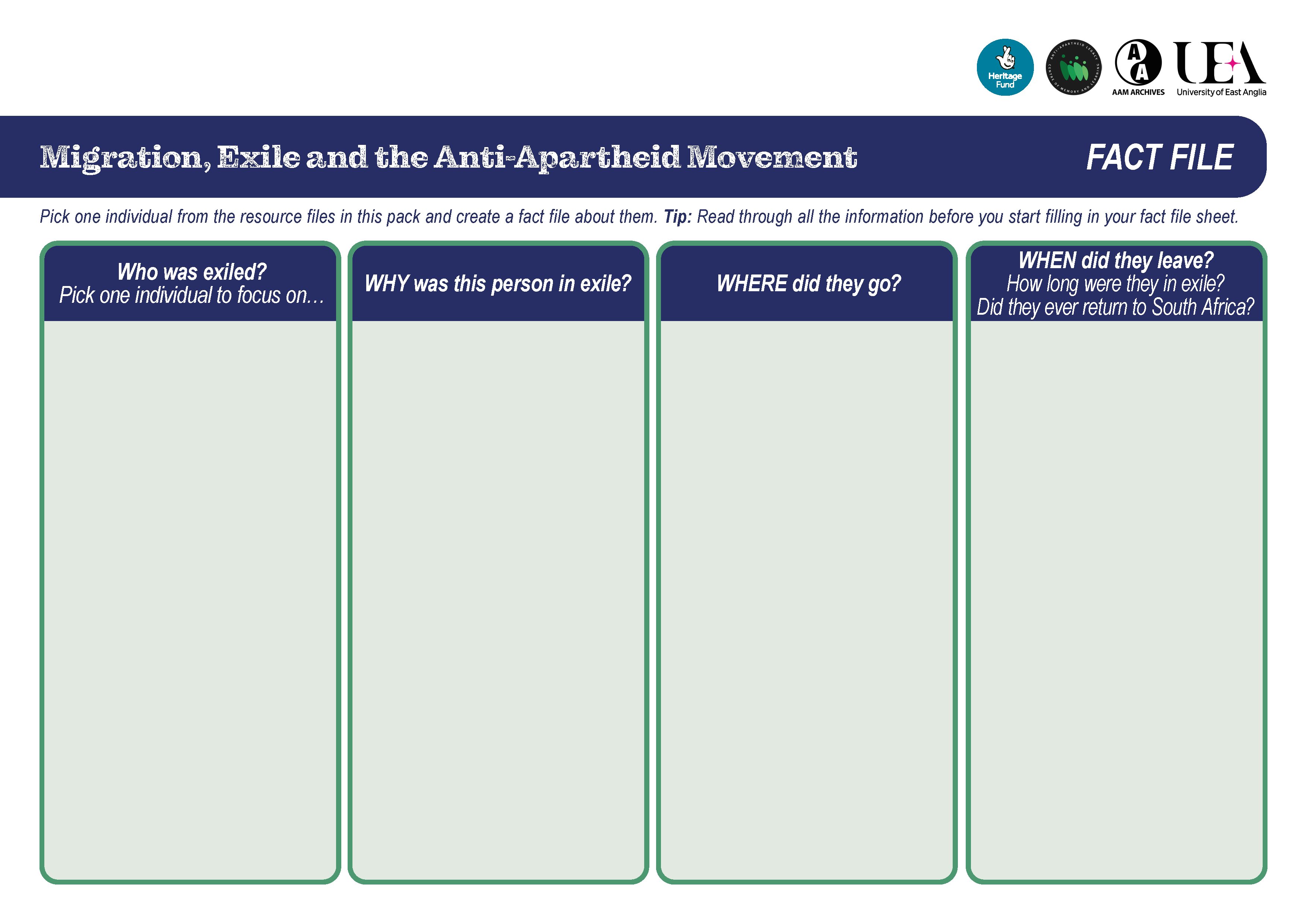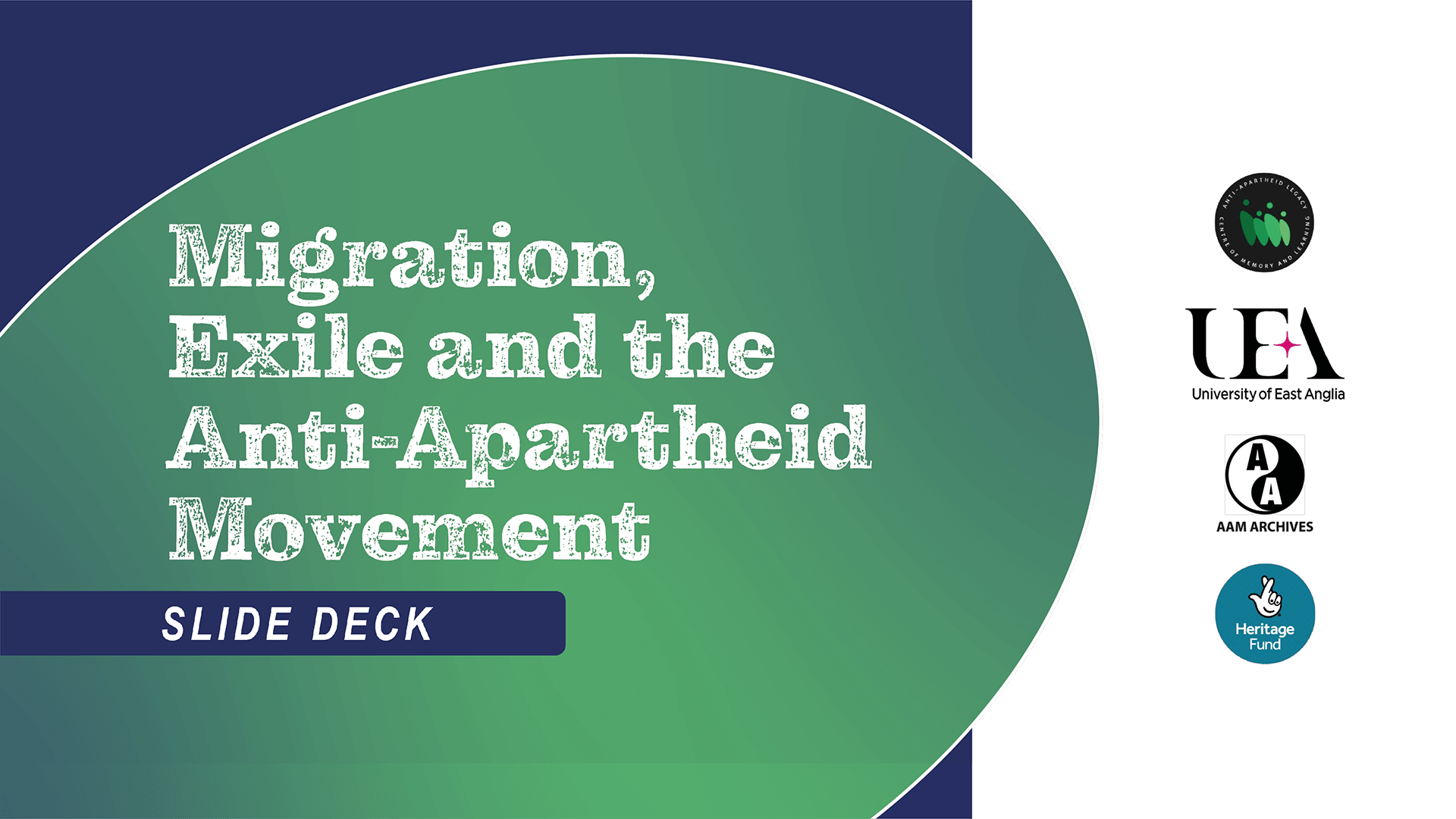
The violence and repression perpetuated by the apartheid state forced thousands of South Africans into exile during the second half of the twentieth century. This resource sheds light on why so many had to leave South Africa, while demonstrating how significant exiled activists were to the development of the global anti-apartheid movement.
Exploring the Sharpeville Massacre and the subsequent state of emergency as a key turning points in the struggle against apartheid, the resource focuses in on the lives and experiences of three activists, Alfred Hutchinson, Ruth Mompati, and Shanthie Naidoo – who were all forced into exile in the era of apartheid, from the 1950s to the 1980s.
Written with KS4 in mind, these resources are designed to be accessible and useful for KS5 and KS3 students alike and provide an example lesson plan for teachers wishing to use the resources in class (see Slide Deck).
Resource structure:
- Introductory PDF “Migration, Exile and the Anti-Apartheid Movement”
- Activity: FactFile – PDF
- Resource: Alfred Hutchinson- PDF
- Resource: Shanthie Naidoo- PDF
- Resource: Ruth Mompati – PDF
- “Migration, Exile and the Anti-Apartheid Movement” Slide Deck (available in PowerPoint or PDF)
Introductory PDF
Activity Resources
Classroom Resource
This education pack has been developed collaboratively between the Anti-Apartheid Legacy: Centre of Memory and Learning and the University of East Anglia. Many of the images and linked documents are supplied with kind permission of project partners, The Anti-Apartheid Movement Archives. Other sources are referred to at the relevant places in the packs.
The development of the resources has been made possible with generous support from the National Lottery Heritage Fund and UEA’s Impact Fund.








